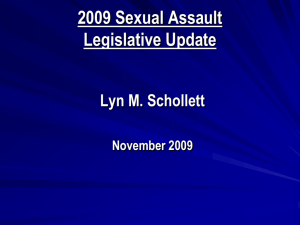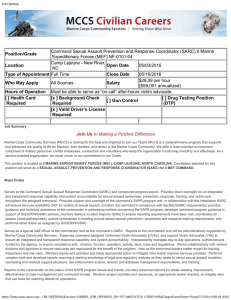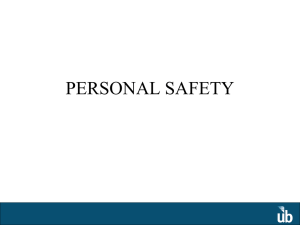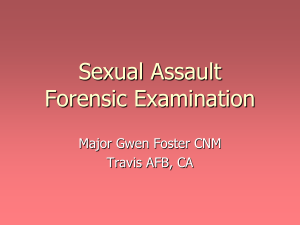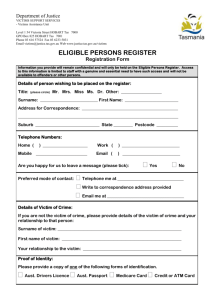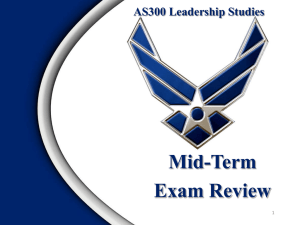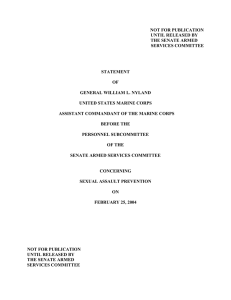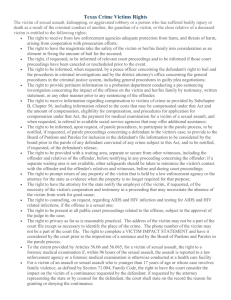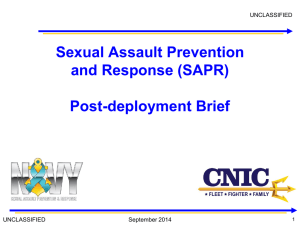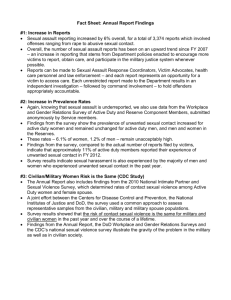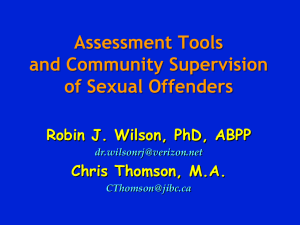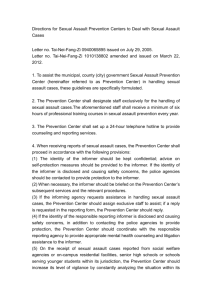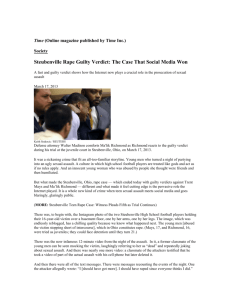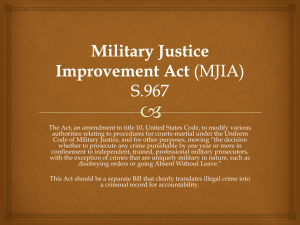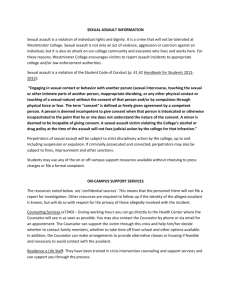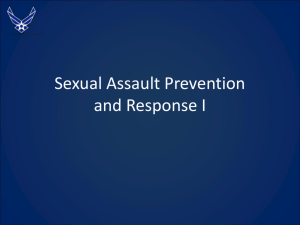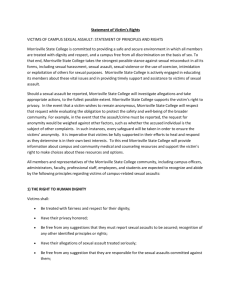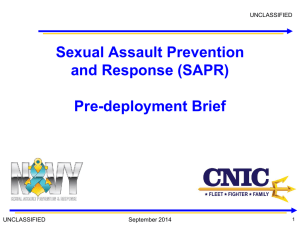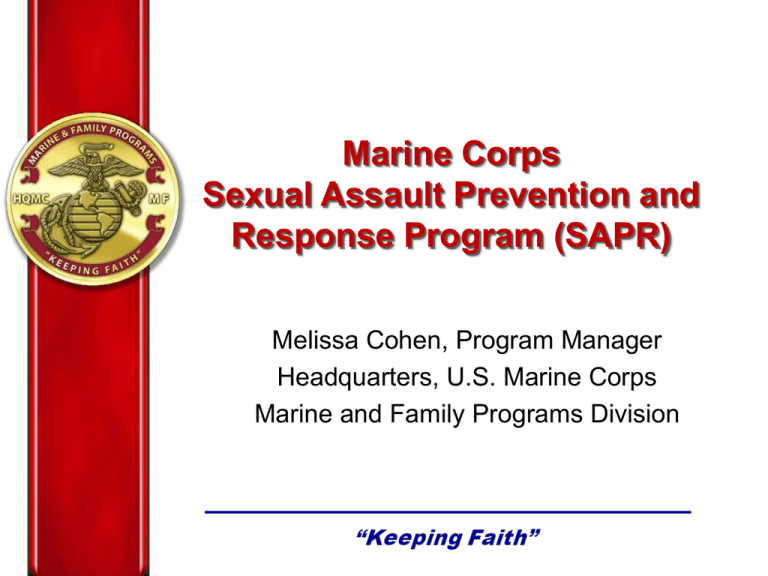
Marine Corps
Sexual Assault Prevention and
Response Program (SAPR)
Melissa Cohen, Program Manager
Headquarters, U.S. Marine Corps
Marine and Family Programs Division
Characteristics
•
•
•
•
Victims at the highest risk – Ages 18-24
Offenders are fellow Marines (over 60%)
Alcohol is involved
Sexual assaults are most likely to occur in the
barracks / private residences
• Male victims are less likely to come forward
• FY 2010 there were 310 cases of sexual assault
Challenges
1. Unreported Sexual Assaults
2. Command Climate
3. Creating A Training Message That Impacts
Marines
4. Addressing Mental Health Needs of Victims
5. Implementing a multi-disciplinary / comprehensive
approach
6. Evidence Collection
SAPR
Behavioral
Health
Branch
Marine
Corps
Un-Reported Sexual Assaults
Barriers To Reporting
Shame / Humiliation
Fear: report would not
be confidential
Fear: retaliation by
offender or friends
Fear: effect on
reputation and standing
Fear: disbelief by
command
Fear: Collateral Misconduct
Sexual assault is an under-reported crime
Barriers to Reporting Cont.
• Vast majority of sexual assaults are committed by
non-strangers
• Rarely have physical or medical evidence
• Rarely have any eye or ear witnesses
• Frequently complicated by use of alcohol by victim
and offender
• Frequently concurrent collateral misconduct by the
victim
Barriers to Reporting Cont.
• Rape myths and misperceptions present
obstacles to prosecution
• Delayed reporting
• Maintaining confidentiality can be challenging
within a unit
Reporting Options
• Unrestricted
• Restricted
– Uniformed Victim Advocate (UVA)
– Sexual Assault Response Coordinator
(SARC)
– Health Care Providers (some exceptions)
Command Climate
Summary – A Change In Mindset
•
•
•
•
•
•
Old Mindset
No confidentiality
Mandatory reporting
Offender protection
Perpetuating myths
Poor victim-care
Shame w/ reporting
•
•
•
•
•
New Mindset
2 Reporting Options
Victim-centered
Engaged leadership
Heightened awareness
Less stigma with
increased dialogue
Mental Health Needs
Stress Continuum for Marines
Long-term Impact
for SA victims
Ready
Reacting
Injured
Acute reactions
for SA victims
ILL
Victim Response
• How the victim experiences the act of
sexual assault relates to how the victim
reacts afterword
• The relationship of the offender relates
directly to how the victim reacts afterword
• The way the victims judge their own
behavior during the act of sexual assault
relates to how they react afterward
Integration - Mental Health Needs
Common Denominators
•Alcohol
•Mental health issues
•Depression
•PTSD
•Anxiety, Sleep and Eating
Disorders
•Impact on the family
•Previous history of abuse
•Suicidal ideations
•Physical ailments
•Fatigue
•Headaches
Substance Abuse
Prevention
Suicide Prevention
Family Advocacy Program
Combat Operational
Stress Control
Sexual Assault Prevention
and Response
Creating a training message that
impacts Marines
Multi-disciplinary / Comprehensive
Approach to Victim Care
Multi-Disciplinary Approach
SAPR
Legal
Process
FAP
Victim of Sexual Assault
Law
Enforcement
Chaplains
Substance
Abuse
MTF
VWAP
Evidence Collection
• Need to increase awareness about
evidence collection
• Victims who receive SANE services are
more likely to participate in the criminal
justice system than those who do not
• Strongest predictors of conviction is the
victim’s participation in the process
New Initiatives
• Video-Library
• Revised SAPR Training (annual, Chaplain,
Command Team, 24/7 Helpline, etc)
• 24/7 Helpline / Website Revisions
• Literature Review – SAPR/Substance Abuse
• MCO 1752.5B
• Credentialing for Victim Advocates / SARCS
• DSAID
• UVA Training – Enhance Training Skills
Questions?
Melissa Cohen, Program Manager
Headquarters, U.S. Marine Corps
Marine and Family Programs Division
703-432-9357
melissa.cohen@usmc.mil

